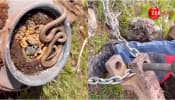Washington: Scientists have developed an inexpensive wireless sensor to classify different insect species with up to 99 per cent accuracy, that could help protect crops from insect damage and limit the spread of insect-borne diseases such as malaria and dengue fever.
Over the past 60 years, insect classification research has been limited by factors including an over-reliance on acoustic sensing devices, a heavy focus on wing-beat frequency and limited data, researchers said.
The University of California, Riverside researchers overcame those limitations by building an inexpensive wireless bug sensor that can track many insect flight behaviour patterns and generate much larger amounts of data that can then be incorporated into classification algorithms.
In about three years, by having dozens of sensors running in parallel 24 hours a day, researchers have collected tens of millions of data points, more than all previous work in this field combined.
"We set out not knowing what was possible," said Eamonn Keogh, a computer science professor at UC Riverside`s Bourns College of Engineering.
"Now, the problem is essentially solved. We have created insect classification tools that can outperform the world`s top entomologists in a fraction of the time," said Keogh.
The sensor consists of a phototransistor array, which is connected to an electronic board and a laser pointing at the phototransistor array.
When the insect passes across the laser beam, its wings partially block the light, causing a small light fluctuation.
The fluctuations are captured by the phototransistor array as changes in current, the signal is then filtered and amplified by the custom designed electronic board.
The output of the electronic board is fed into a digital sound recorder and recorded as an MP3 and downloaded to a computer.
The goal is to make this automated classification method as simple, inexpensive and ubiquitous as current methods such as sticky traps and interception traps, but with digital advantages such as higher accuracy, real-time monitoring and the ability to collect additional flight behaviour patterns.
In their experiments, researchers worked with six species of insects. As they added additional insect flight behaviour patterns to their classification algorithm, they were able to increase their success classifying the different species.
For example, using only wing-beat sounds they had an 88 per cent success rate. When they added time of day the success rate jumped to 95 per cent. Then, after adding location, the success rate increased to 97 per cent.
The research appears in the Journal of Insect Behaviour.















